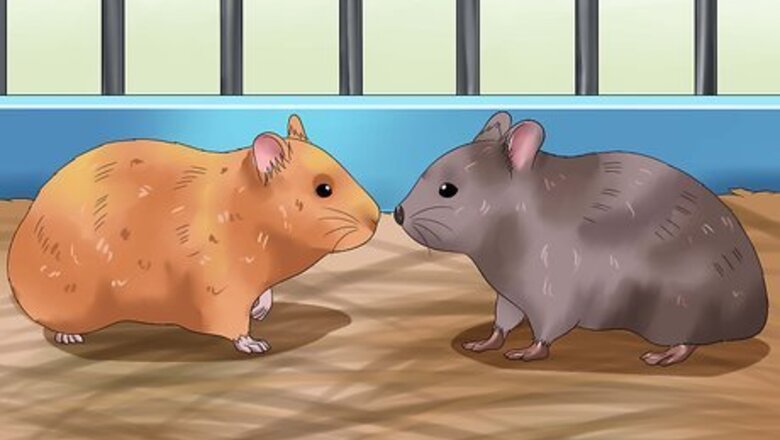
views
Knowing the Difference Between Playing and Fighting
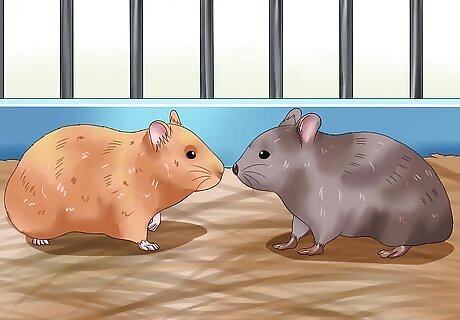
Watch your hamsters interact in their cage. Pay attention to how they interact with each other and recognize patterns. Do they play with each other at least once a day or ignore each other? Does one hamster seem more aggressive than the other hamster? Is one hamster showing signs of injury? This will help you know if they are starting to become aggressive with each other and whether they are actually fighting or not. Do not leave your hamsters alone in their cage until you are fully satisfied that they are tolerating each other. You should feel they are not physically dangerous to one another or likely to harm each other.
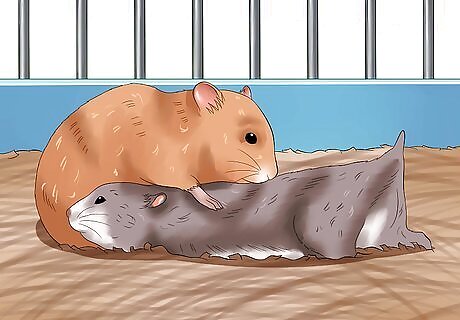
Be aware of normal squabbling between your hamsters. If your hamsters are chasing and squeaking, this is considered normal squabbling. It can be loud and distressing to watch, but as long it is only brief bursts of chasing, sniffing, and squealing, it is considered normal dominance behavior. You should let the hamsters squabble and avoid interfering, as this is their natural way of asserting dominance. These displays of dominance can happen over and over, and as long as the hamsters get up and resume their activities with no injury, it’s normal.
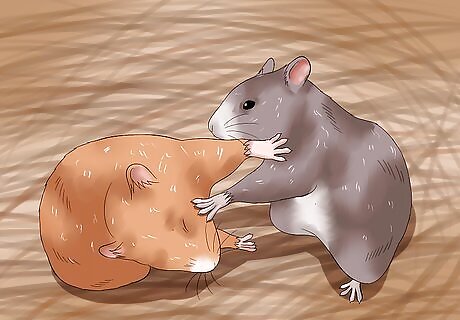
Look for signs of fighting between your hamsters. Fighting is characterized by biting, chasing, and one hamster cornering another hamster to prevent escape. These are not normal dominance displays - they are signs of bullying and fighting between your hamsters. One hamster may cause injury to the other hamster and prevent the bullied hamster from eating, drinking, or sleeping. A bullied hamster may become withdrawn, lose or gain weight, and stop playing with the other hamster or with you. It may also even become aggressive towards you when you hold it.

Watch for signs of injury. If one of your hamsters seems to be injured, it might be a sign that they have been fighting. Take a quick look at your hamster to see if its injuries look minor (e.g., small cuts and scrapes) or major (e.g., broken limbs, lots of bleeding). Minor injuries are typically treatable at home, but major injures require immediate veterinary care. Be mindful that hamsters can be good at hiding just how much pain they’re in.

Move a bullied hamster to a different cage. If the bullied hamster is displaying stress signs like lack of appetite, fearful hiding, or injuries from biting by the dominant hamster, it's time to move the bullied hamster to a separate cage. Once you move the bullied hamster to a new cage, try to keep the new cage as close to the old cage as possible. This will allow it to reduce its stress levels. Do not let the hamsters socialize once they are separated. It’s important that once you separate the hamsters, you do not let them interact. They may start fighting again or act aggressively towards each other. If the hamster has major injures, make sure you take it to see the vet before you move it to another cage.
Caring For Your Hamster's Injures From Fighting
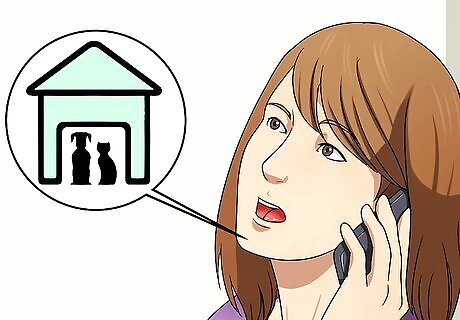
Call your veterinarian. If your hamster’s injuries are major, call your veterinarian immediately to let them know you will be arriving soon with an emergency case. Be aware that not all small animal veterinarians treat pocket pets (e.g., hamsters, gerbils, guinea pigs, etc.). If your veterinarian is not able to treat your hamster, ask if he or she can refer you to a veterinarian who can. By calling, your veterinarian can advise you on what first aid you can give your hamster before you get to the veterinarian’s office. Usually, injuries from fighting aren't major and, in most cases, the hamster can cure the wound itself so you don't necessary have to take them to the vet.
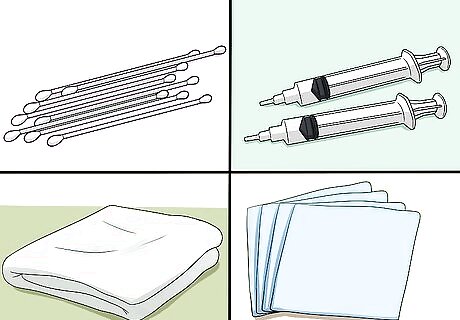
Gather your treatment supplies. If you have determined that your hamster’s injuries are minor, begin preparing to treat him at home. You will need a number of supplies, including clean towels, Q-tips, several 10cc syringes (without the needles), and some sterile 2 x 2 gauze. In addition, you will need a bottle of sterile saline, a disinfectant solution (Betadine) and an antibiotic ointment. You can find treatment supplies at your local pharmacy. Your veterinarian can advise you on the specific type of antibiotic ointment you should use. Hydrogen peroxide has commonly been used as a disinfectant, but the bubbling resulting from the acid in hydrogen peroxide can damage cells, so using it may do more harm than good.
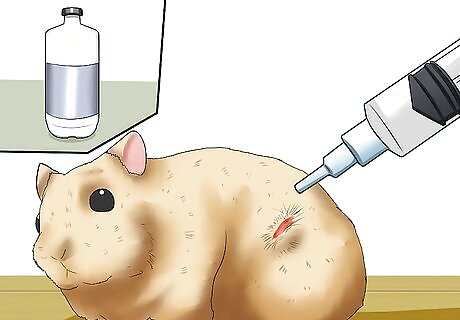
Clean the wound. With your syringe, draw up some sterile saline. Gently squirt the saline around the wound and pat the wound dry with a piece or two of the gauze. Do this a few times to make sure the wound is clean and free of debris. Cleaning it yourself can prevent abscess formation, since you will be able to clearly see how well you’ve cleaned it.
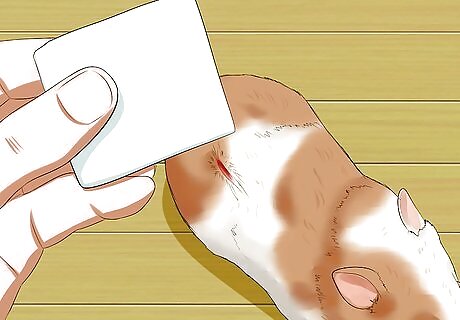
Disinfect and treat the wound. When the wound is dry, use another syringe to draw up a small amount of Betadine. Dispense this onto the wound and pat it dry with some more gauze. Apply a thin layer of antibiotic ointment to the wound with a Q-tip. Disinfecting the wound will help kill microorganisms that could cause infection. Betadine can stain your skin, so you may want to wear gloves when you use it.

Place your hamster back in its cage. No matter the injury, it is important that your hamster rest and recover comfortably in its cage. Place its food and water bowls near its sleeping area. The cage should be in a warm and quiet area of your home. It is ideal that your hamster recover in a cage without bars, such as an aquarium, to prevent further injury. If you do not already have an aquarium and buying one isn’t practical, keep a close eye on your hamster when it is is moving around in its cage.

















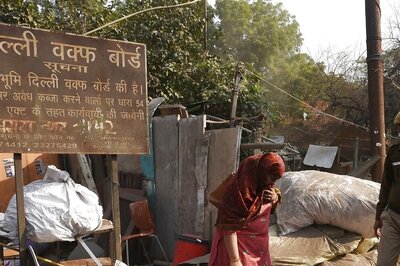


Comments
0 comment